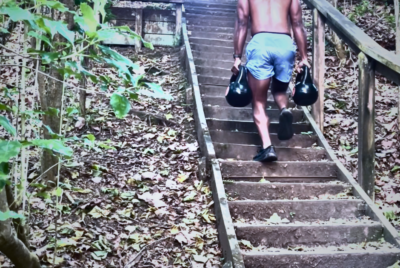Lower back pain when walking
Tips and Home Remedies
As someone who has suffered from lower back pain when walking, I know how frustrating and debilitating it can be. Walking is supposed to be a simple and enjoyable activity, but when your back hurts, it can quickly become a nightmare. That’s why I’ve put together this guide to help you prevent lower back pain when walking.
Understanding the Causes
Before we get into the tips and home remedies, it’s important to understand what causes lower back pain when walking.
There are many factors that can contribute to this type of pain, including:
- Poor posture
- Weak core muscles
- Tight hip flexors
- Degenerative disc disease
- Herniated discs
- Arthritis
- Spinal stenosis
- Sciatica
Knowing the cause of your back pain can help you better prevent it. If you’re unsure of the cause, it’s always a good idea to consult with a medical professional.
Tips for prevention
Now that we’ve covered some of the potential causes of lower back pain when walking, let’s dive into some tips for preventing it.
1. Practice Good Posture
One of the most important things you can do to prevent lower back pain when walking is to practice good posture. This means standing up straight with your shoulders back and down, your chest out, and your head up. When you walk, try to keep your hips aligned with your feet and your shoulders aligned with your hips.
2. Strengthen Your Core
Another key to preventing lower back pain when walking is to strengthen your core muscles. Your core includes your abs, back muscles, and pelvic floor muscles. By strengthening these muscles, you’ll improve your overall stability and support for your back. Some good core exercises include planks, bridges, and bird dogs.
3. Stretch Your Hip Flexors
Tight hip flexors can contribute to lower back pain when walking. To prevent this, make sure to stretch your hip flexors regularly. One good stretch is the lunge stretch, where you step forward with one foot and bend your knee, while keeping your other leg straight behind you.
4. Wear Supportive Shoes
Wearing supportive shoes is another important step in preventing lower back pain when walking. Look for shoes with good arch support and cushioning to absorb shock when you walk. Avoid high heels and shoes with no support.
5. Take Breaks
If you’re going for a long walk, make sure to take breaks and rest your back. Sitting down for a few minutes or stretching can help relieve any tension in your back and prevent pain.
Home Remedies
If you do experience lower back pain when walking, there are some home remedies that can help relieve the pain. Keep in mind that these remedies are not a substitute for medical treatment, and if your pain is severe or persistent, you should see a doctor.
1. Heat and Ice Therapy
Heat and ice therapy can help relieve lower back pain when walking. Apply a cold pack to your back for 20 minutes at a time, several times a day. After a few days, switch to a heating pad or hot water bottle to help relax your muscles.
2. Massage
A gentle massage can also help relieve lower back pain when walking. You can use a foam roller or massage ball to apply pressure to your back muscles. Alternatively, you can visit a professional massage therapist.
3. Over-the-Counter Pain Medication
Over-the-counter pain medication, such as ibuprofen or acetaminophen, can help relieve lower back pain when walking. Make sure to follow the dosage instructions on the label and don’t exceed the recommended amount.
4. Yoga and Stretching
Yoga and stretching can help relieve tension in your back muscles and prevent lower back pain when walking. Look for beginner-level yoga classes or find a stretching routine that works for you.
5. Improve Your Sleeping Position
Your sleeping position can also affect your lower back pain when walking. Try to sleep on your back or side with a pillow between your knees to help keep your spine aligned.
6. Get a good brace.
Good back brace can make the pain bearable and assist in movement, without placing too much pressure on the back muscles.
A brace cannot cure back pain. However, it can provide support and pain relief by reducing pressure on the sciatic nerve and promoting proper alignment. It’s important to combine the use of a brace with other treatments and lifestyle modifications for comprehensive management.
Conclusion
Lower back pain can be frustrating and painful, but with these tips and home remedies, you can prevent and relieve the pain. Remember to practice good posture, strengthen your core, stretch your hip flexors, wear supportive shoes, take breaks, and try some of the home remedies if necessary. And don’t forget to consult a medical professional if your pain persists or gets worse.
FAQs
1. Is it normal to experience lower back pain when walking?
While lower back pain is common, it’s not normal. If you experience persistent or severe pain, it’s important to consult a medical professional.
2. Can walking worsen my lower back pain?
Walking can worsen lower back pain if you have poor posture, weak core muscles, or other underlying conditions. However, walking can also help strengthen your muscles and relieve tension in your back.
3. Can I prevent lower back pain when walking by wearing a back brace?
While a back brace can provide support and relieve pain, it’s not a long-term solution. It’s better to focus on strengthening your core and practicing good posture.
4. How long does it take to recover from lower back pain when walking?
Recovery time for lower back pain when walking depends on the cause and severity of your pain. It can take anywhere from a few days to several weeks or months.
5. Are there any exercises I should avoid if I have lower back pain when walking?
Some exercises, such as heavy lifting or high-impact activities, can worsen lower back pain. It’s important to consult with a medical professional or physical therapist before starting any exercise program.
*We may earn a commission from purchases made through our links, at no cost to you. This does not affect our product recommendations. Please see our disclosure to learn more.
![Urban Health Hive]](https://urbanhealthhive.com/wp-content/uploads/2023/05/cropped-cropped-Health_Logo.png)



